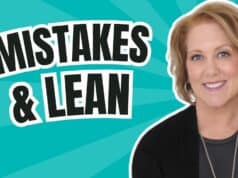Sometimes it's hard to spot errors in an office, much less error-proof the workspace. With so many value streams running through each knowledge worker, and so much of the value being intangible and invisible, error-proofing is tricky.
But if you consider that the goal of error proofing is to reduce waste, then Ikea has devised an ingenious form of error proofing: they've come up with a way to keep meetings focused. . . and short. Which is to say that the company has built in a method to reduce the time wasted in meetings that wander like a drunken sailor.
In an article about the design of the company's US headquarters, the New York Times noted that the building features
14 “huddle rooms,” 10-foot by 10-foot cubes painted in primary colors and designed for small groups. The bright colors can be harsh, but that's part of the plan. . . . Meetings in them tend to be brief.
There's a picture of one of these rooms, too. It's a bit small (both the room and the photo), but it gives a pretty clear idea of what the feeling is:
 It's hard to imagine wanting to spend a whole lot of time in such a… YELLOW environment. As a result, you'd probably be pretty considerate about getting to meetings on time, starting them on time, and getting the hell out of there on time.
It's hard to imagine wanting to spend a whole lot of time in such a… YELLOW environment. As a result, you'd probably be pretty considerate about getting to meetings on time, starting them on time, and getting the hell out of there on time.
Compare that to your company's meetings. Have you ever had a 30 minute meeting that ended at the designated time? For that matter, have you ever had a 30 minute meeting at all? Think of the collective muda created by one of those meetings that last longer than a Robert Byrd oration on the intricacies of Senatorial privilege.
You can argue that the color scheme might impair real productivity. I mean, can you really think clearly when you feel like you're being swallowed by a lemon and your retinas are screaming for mercy? (And imagine the red room. Yech!)
Nevertheless, the idea of building in waste inhibitors — poka-yoke for the knowledge worker — is pretty cool. I once worked for a boss who would lock the door to the conference room at the meeting start time. People only missed one meeting before figuring out that they better be there on time. I know of a company that holds their meetings standing up — straying off topic is a bit less appealing when you're not resting your butt in an Aeron chair.
I don't know if any of these approaches is perfect. They all seem a bit heavy-handed. But if the result is a reduction of wasted time, then I applaud the effort.
What do you think? Please scroll down (or click) to post a comment. Or please share the post with your thoughts on LinkedIn – and follow me or connect with me there.
Did you like this post? Make sure you don't miss a post or podcast — Subscribe to get notified about posts via email daily or weekly.
Check out my latest book, The Mistakes That Make Us: Cultivating a Culture of Learning and Innovation:









